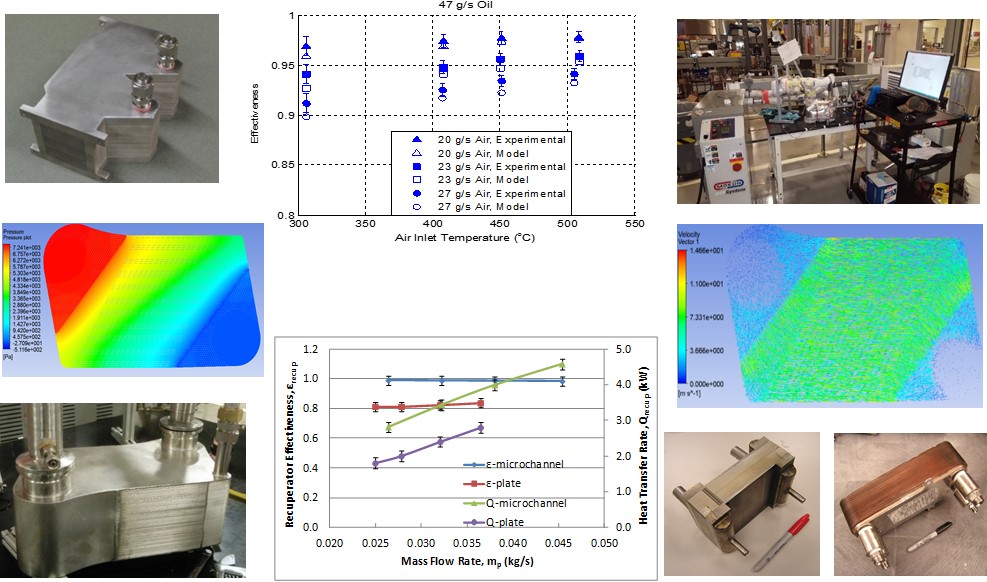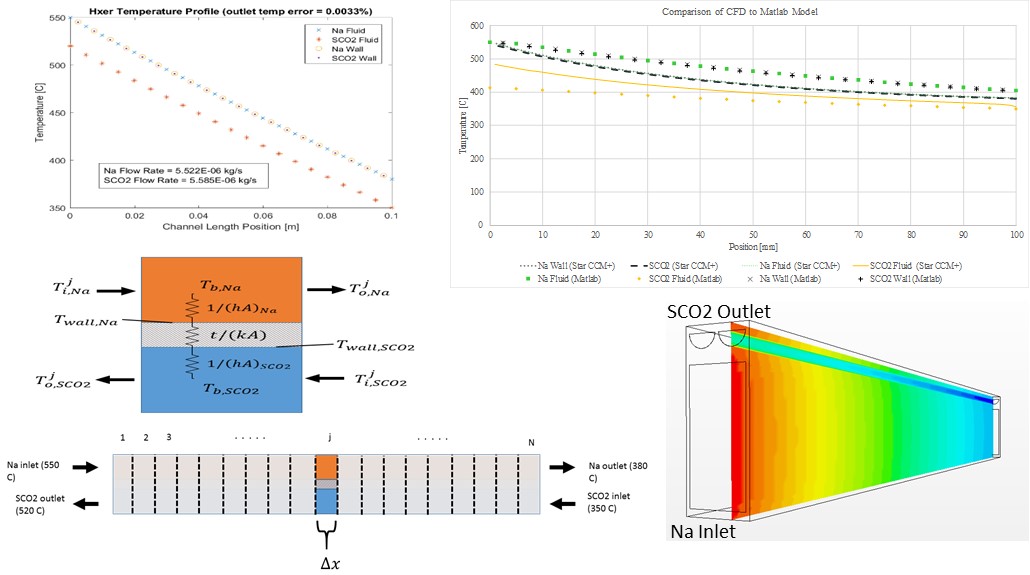As a platform technology, microchannel heat exchanger has been regularly designed and used for high performance, size critical applications. With enhanced heat and mass transfer for channels on the order of 100 microns and great surface area-to-volume ratio, very high (>95%) heat and mass transfer effectiveness can be achieved. This commonly leads to dramatical size reduction from compact plate heat exchangers. An example shows the 25 kW microchannel recuperator for Cummins’s engine waste heat recovery project, and some common approaches in designing and modeling microchannel heat exchangers.

Two modeling approaches are commonly used to design or analyze heat exchanger performance. A less computationally intensive 1D model relies upon representative heat transfer correlations to obtain global, accurate temperature profiles, while a CFD simulation requires significant computational power. An example of supercritical CO2 and liquid Sodium counter-flow heat exchanger is given here to show and compare the results of both approaches.
